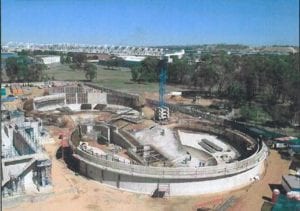By Liesl Frankson
The Department of Water and Sanitation has presented a progress report on interventions and solutions to tackle the problem of Acid mine drainage (AMD) in the country.
The presentation was made at a meeting held with a parliamentary Portfolio Committee on Water and Sanitation.
The report pointed out that there is uncontested evidence of AMD impacting the Vaal Dam/River System. It further stated that unless mitigated each m³ of AMD requires 7-11 m³ dilution release from the Vaal Dam to ensure downstream users are not compromised. This practice is expensive, unsustainable and as a result water is being lost from the Vaal River System.
According to the department reconciliation studies predict water security risks in the Vaal River System from 2016/2017. To ensure water security and promote the beneficial use of purified AMD the department has proposed AMD de-salination. Arguing in favour of the practice the department points out that it will cost R10 billion compared to the proposed R40 billion mega-transfer augmentation scheme.
Emergency work completed
Emergency work has been completed in the Western, Central and Eastern Basins. An immediate solution was proposed for the Western Basin which included upgrading the Rand Uranium (Gold 1) (Randfontein) AMD/ mine water plant. The plant now treats 30 ML of AMD a day. There have been reports of improvements in surface and groundwater quality however additional refurbishment is urgently required to eradicate decant.
A short term solution was proposed for the Central Basin, and a new AMD pump station, neutralisation and waste disposal facility was constructed at the south-west vertical shaft in Germiston. The project was commissioned in April this year and facilities are currently pumping, treating and discharging 56 ML of AMD daily.
A solution similar to that of the Central Basin was proposed for Grootvlei Mine No.3 Shaft, in Springs, which falls under the Eastern Basin. The project commenced in June this year and the projected commissioning date is for December 2015. The department has set an operational target to neutralise 84 ML of AMD daily for this facility.








